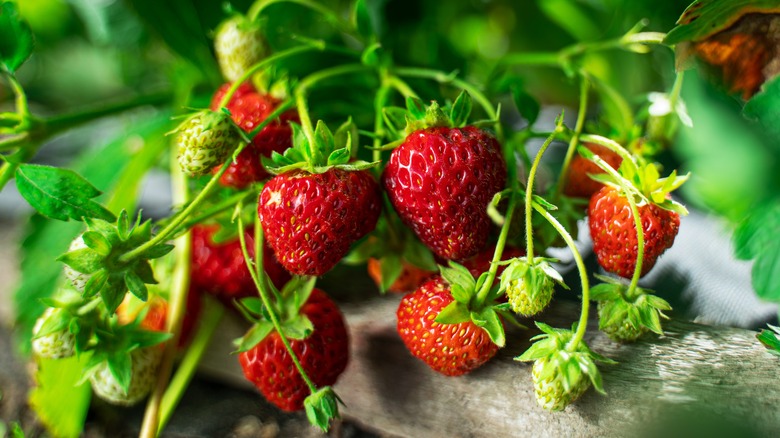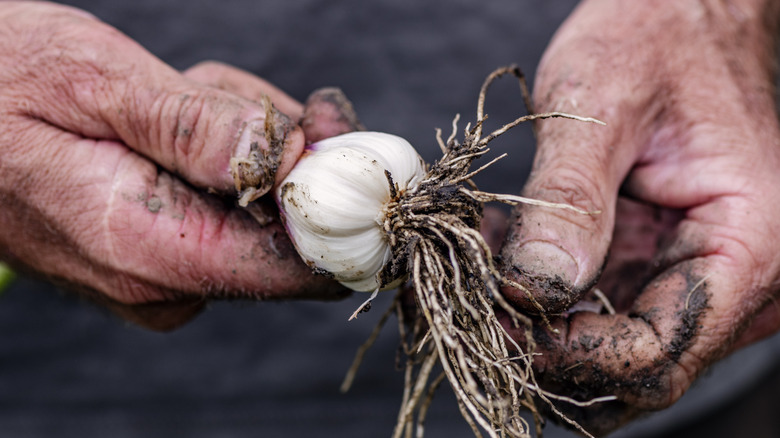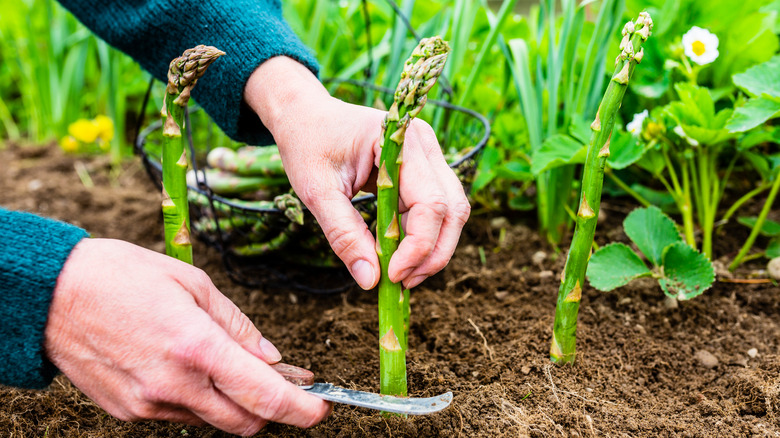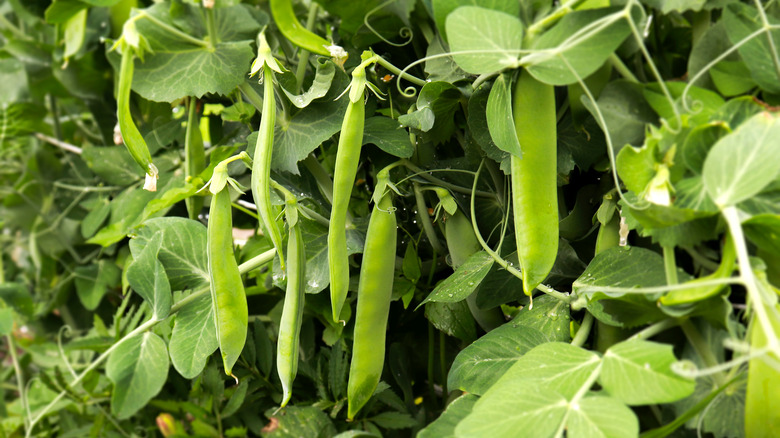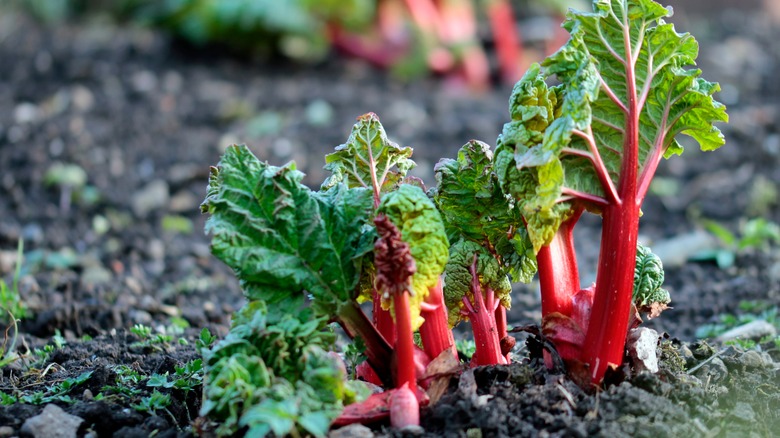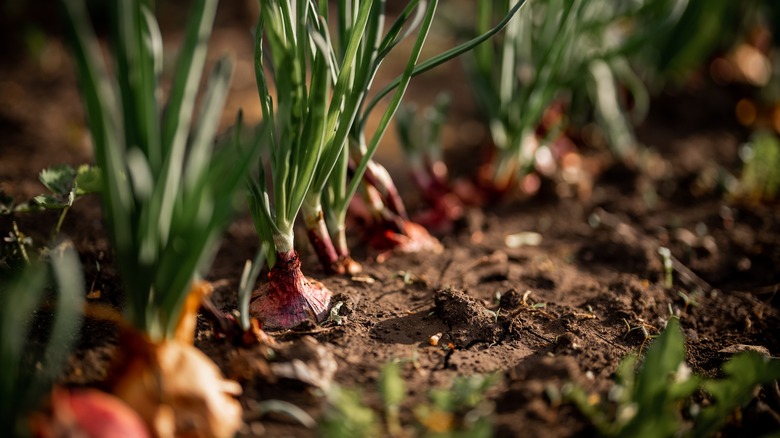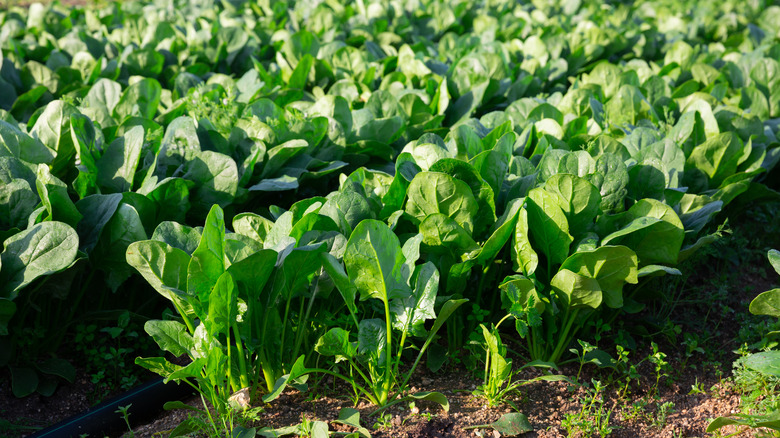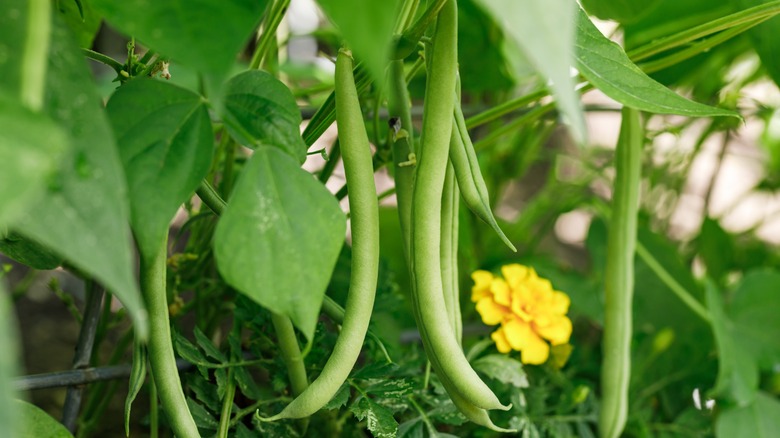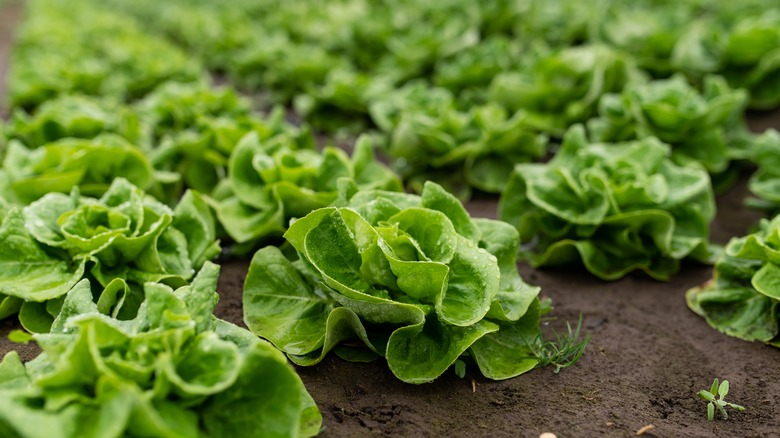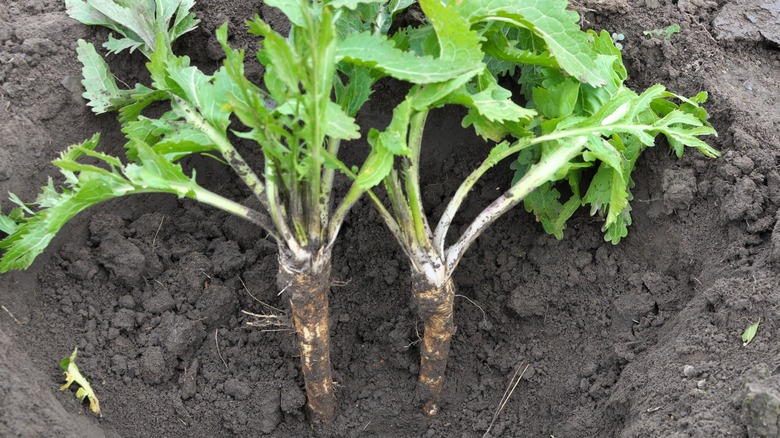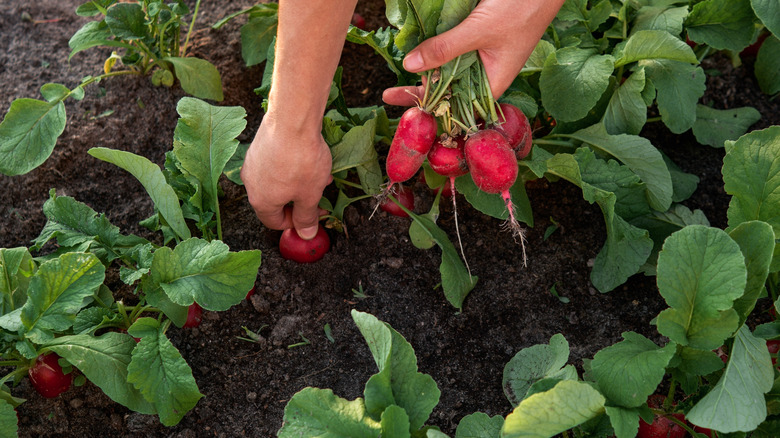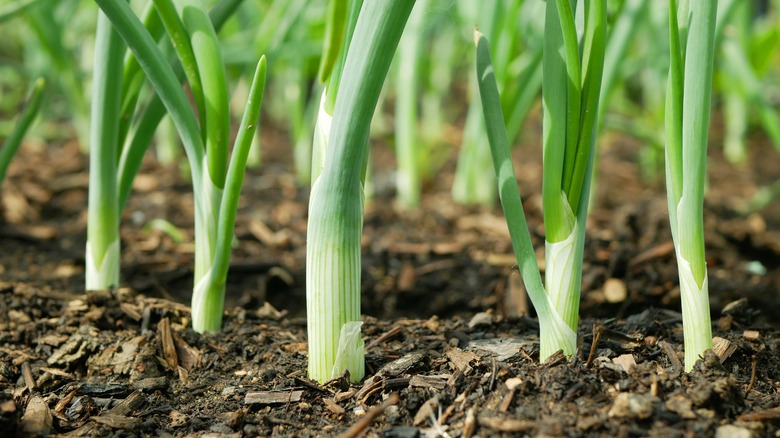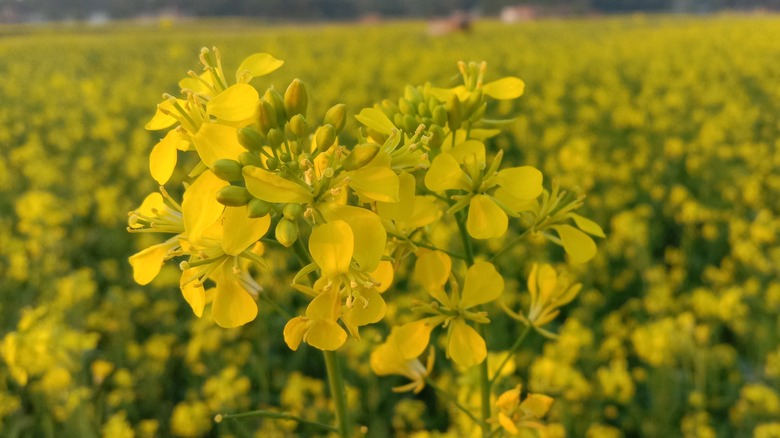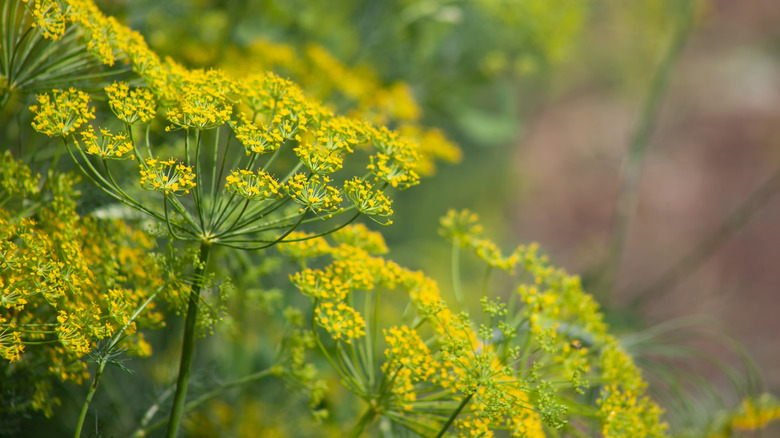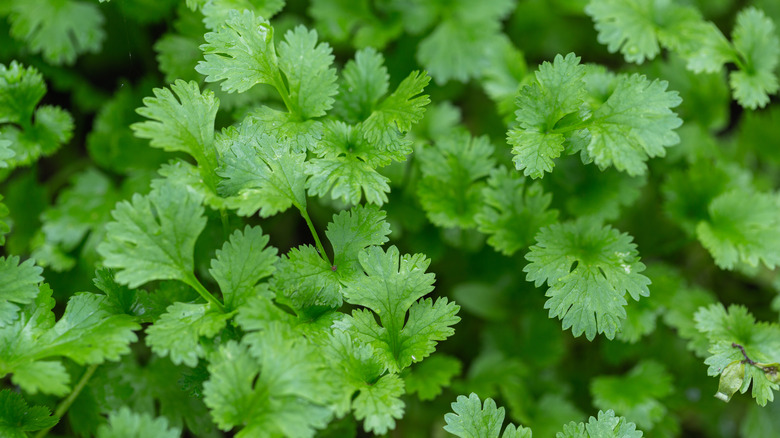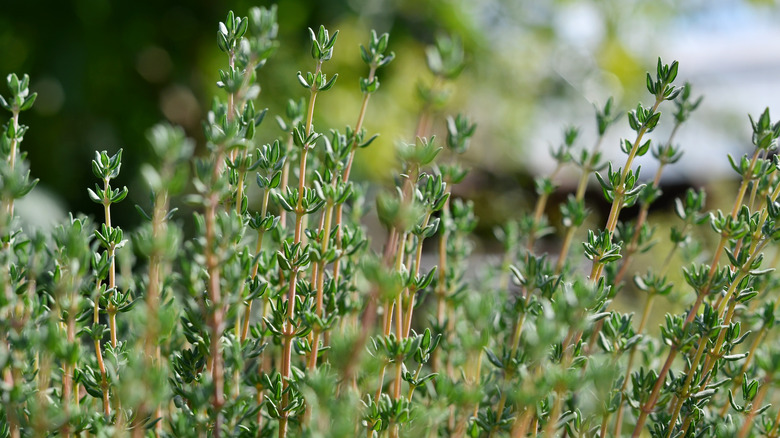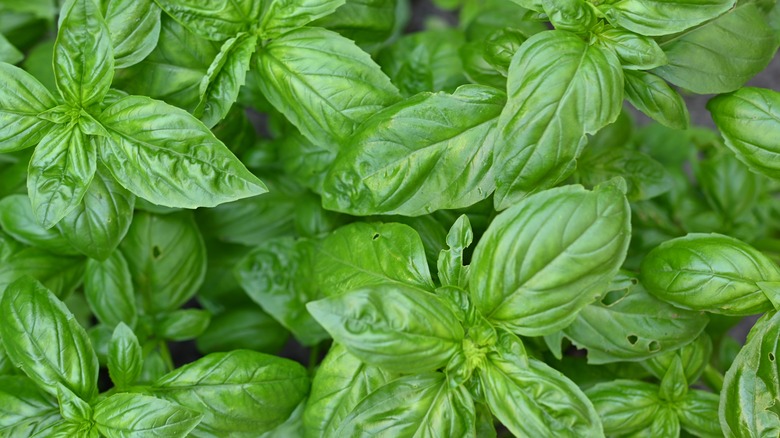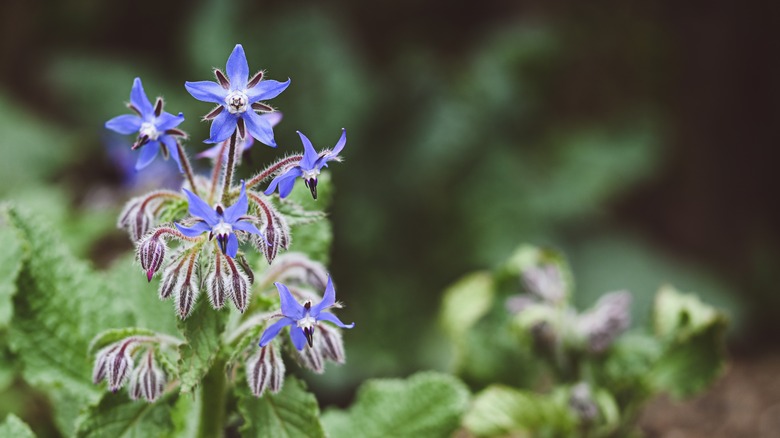17 Vegetables And Herbs That Pair Well With Strawberries In The Garden And Why
Whether you're cultivating a massive garden or starting out on your home-growing journey with a select few plants, companion planting can both ensure the health of your crops and save space in your garden. Essentially, there are certain plants that work well together. Some of these pairings are beneficial because the two plants simply don't compete for the same resources, or they tend to have complementary growth patterns, but others can help bring necessary nutrients to the soil, ward off pests, and even help mitigate common issues like compacted soil.
By pairing two crops that work well together in the same space, you can significantly cut down your own work and increase your chances of a positive yield at harvest. If you're planning on growing strawberries, you're in luck. Growing and caring for a strawberry plant is already fairly easy, especially when compared to some other, more finicky fruits, and there are plenty of options for other vegetables and herbs that get along nicely with strawberries, including plants in the Allium genus, fragrant herbs, and several species of leafy greens like spinach. Who knows — with proper planting, you could end up with just about everything you need to make your own home-grown summer salad.
1. Garlic
Garlic might be a delicious way to add some flavor to dishes for humans, but many of the other creatures you might find in the garden are much less of a fan. If you're worried about animals, bugs, or fungi taking over your strawberry plant before you have the chance to pick the fruit yourself, garlic can act as a fantastic deterrent, thanks to its powerful smell. With that being said, however, garlic has a tendency to leach nutrients from the soil, so it can be helpful to add more compost and fertilizer to your soil mix before planting and throughout the growing season.
2. Asparagus
Asparagus and strawberries are perfect examples of two crops that mesh together seamlessly. Strawberry plants have relatively shallow roots, while asparagus roots grow deep into the soil, meaning there will be very little competition for resources even if they're planted close together. Strawberry plants are also much more lush than asparagus stalks, so their leaves can provide some ground cover and give the asparagus an added blanket of protection. As a bonus, these two plants tend to be harvested around the same time of year, so you can pick both in one fell swoop and enjoy your yield simultaneously.
3. Peas
Nitrogen is an absolutely essential element for plants, as it's both part of thier physical makeup and a necessary component in many of their processes. Soil that doesn't have enough nitrogen can cause issues for just about any plant, but certain plants, like peas, naturally replenish nitrogen levels in the soil rather than simply absorbing it. By planting peas and strawberries together in the same area, you can help the soil stay nutrient-rich without having to constantly make amendments in the form of additional fertilizer or compost while also enjoying the bonus of an additional delicious crop.
4. Rhubarb
Fun fact: while it might be commonly associated with sweet, baked dishes, rhubarb is actually classified as a vegetable. It also has the wonderful benefit of growing fantastically alongside strawberries. Similarly to asparagus, strawberries and rhubarb don't compete for space and nutrients in the soil because they root at different depths. Strawberry plants can also act as ground cover to help naturally discourage the formation of weeds. These two are a classic pairing because of these benefits, but they also make for a particularly delicious combination when used together in the kitchen in dishes like strawberry rhubarb pie or jam.
5. Onion
It always pays to have a few onions on hand when you're cooking, and growing your own is one of the best ways to guarantee that you're never left with a bland dish. These powerful root vegetables have an incredibly concentrated smell and flavor, which is fantastic if you're whipping up a meal, but not so great if you're a pest sniffing around the garden. The sweet smell of strawberries can attract unwanted visitors to your crops, but planting onions in the same space can help cover this fragrance and make bugs and animals alike run in the opposite direction.
6. Spinach
Growing and harvesting spinach is a great way to incorporate more greens into your diet, and if you've been craving a strawberry spinach salad, you're in luck. Spinach and strawberries require many of the same conditions to thrive, so they can be planted together and harvested around the same time without needing to worry about adjusting your care schedule. Additionally, spinach contains saponins, which can help to naturally deter pests that could cause damage to your crop and reduce the amount of strawberries you can harvest.
7. Bush beans
Bush beans, just like peas, are plants that are great for replenishing the soil with nitrogen. Because of this, planting them alongside your strawberries can lead to a healthier plant and a more fruitful and flavorful harvest when it comes time to pick your fruit. Additionally, bush beans can ward off pests that might want to take a few bites out of your plant and the fruit you've grown. These two benefits combined make them a fantastic companion plant, especially if you're looking for a way to keep your garden healthy without having to do a ton of hands-on maintenance.
8. Lettuce
Lettuce might be more of a ground cover crop, but that doesn't mean it can't play nice with strawberries. Lettuce and strawberries are frequently cultivated together because they run on a similar schedule and will likely need to be harvested around the same time. Despite growing at about the same level, strawberries can weave their way through the lettuce plants to find space. Additionally, certain varieties of lettuce can help to ward off pests. Lamb's lettuce is great if you're worried about ants, and garden lettuce can deter fleas from setting up shop in your garden beds.
9. Horseradish
Horseradish may not be the first vegetable you'd think to pair with strawberries, but this flavorful plant can actually do plenty of work to ensure your crops stay healthy. Horseradish has deep roots, so there are no issues with it interfering with the roots of your strawberry plants in the same space, and it acts as an excellent pest repellant, something that's incredibly important when you're trying to maximize your fruit yield. It also has unique anti-fungal properties when brewed and used to create a bug-repellant spray, so it can help keep you and your plants safe even after harvesting.
10. Radishes
Radishes can help you bring a bit more bite to your salads, but they can also pair well with strawberries in the garden. Like many other root vegetables, their roots extend fairly deep into the ground, so you don't have to worry about them interfering. This combination doesn't boast quite as many benefits as some of the other companion plants on the list, but this is a particularly great pairing if you're looking for a way to maximize your space. Radishes can thrive in a fairly small area, so they're perfect for planting between strawberry plants if you need to make the most of a small garden bed.
11. Scallions
Scallions are another addition to the long list of vegetables that won't compete with strawberries when planted in the same space. They're one of the thinnest crops you can cultivate, so they won't block out your strawberry plant's sunlight with large leaves, and plants in the allium family have been proven to ward off pests that could harm strawberries. Because of how thin they are, scallions also make for a fantastic choice in gardens where your space is limited. They don't need much room to thrive, so you should see good results even in a fairly crowded planter or raised bed.
12. Mustard
Mustard seeds might be used more commonly as a spice in the kitchen, but the plant itself is an herb that can bring some more color, flavor, and protection to your garden. When paired with strawberry plants, mustard can ward off nematodes that might cause damage to your crop. Because individual mustard plants don't take up a ton of space, they're also great to help fill in any extra room between your strawberries, especially if you're trying to maximize the number of edible plants you can cultivate in a fairly small space.
13. Dill
Herbs are typically smaller and won't take up a ton of space in your garden, and dill is no exception to this rule. Because of its fairly small footprint, it can easily pair with strawberries — even those planted in containers or smaller spaces. Dill is a fantastic herb to use in the kitchen to make sauces or if you want to try your hand at making your own pickles, but the bright blooms that the plant produces can also help bring in pollinators. Strawberries are more effectively pollinated by insects than wind, so having more beneficial bugs stop by can seriously improve your fruit yield.
14. Cilantro
Cilantro is a divisive herb for a lot of people, and it seems the same is true for bugs. Cilantro has the ability to both attract helpful pollinators and ward off unwanted bugs like spider mites and aphids. Because of this, they're a great plant to pair with your strawberries to ensure you only attract the visitors you want. Additionally, strawberries and cilantro have similar needs in the garden. They both thrive in full sun with slightly acidic soil, so planting them in the same area will allow you to ensure both plants get the proper treatment without making any special amendments.
15. Thyme
Caring for a thyme plant is fairly easy as it doesn't require much special attention to thrive, but it can put in some major work in helping to protect your garden. Just about every thyme variety boasts insect-repellant benefits, but if you're looking for something specifically to help protect both you and your strawberries from insects, consider opting for lemon thyme as it contains a high concentration of citronella. Additionally, thyme planted in a border around your strawberry plants can help deter worms if you notice you have more visitors in your garden bed than you'd like.
16. Basil
Basil and strawberries are a classic combination in salads and cocktails, but they also make a fantastic team when planted together. Basil plants are fairly easy to grow, so they're great for beginners and experts alike. They don't take up a large amount of space, either, so they can happily share containers or beds with other plants. And like many other herbs, they can repel pests like aphids, mites, flies, and mosquitos. With this combination, you can increase your chances of keeping your strawberry plants safe while enjoying easy access to two ingredients you might already have planned to pair together in recipes.
17. Borage
Borage is likely the first plant that pops into your mind when thinking of herbs, but this unique cucumber-flavored edible plant is one of the best possible choices to pair with your strawberries and can be used for plenty of different applications, both culinary and medical, after harvesting. According to a study published in Ecological Entomology, strawberry plants that were companion planted with borage yielded significantly more fruit. Because of the herb's bright blue, uniquely shaped blooms, it's great for both attracting additional pollinators to your garden and adding a vibrant pop of color to your space.
